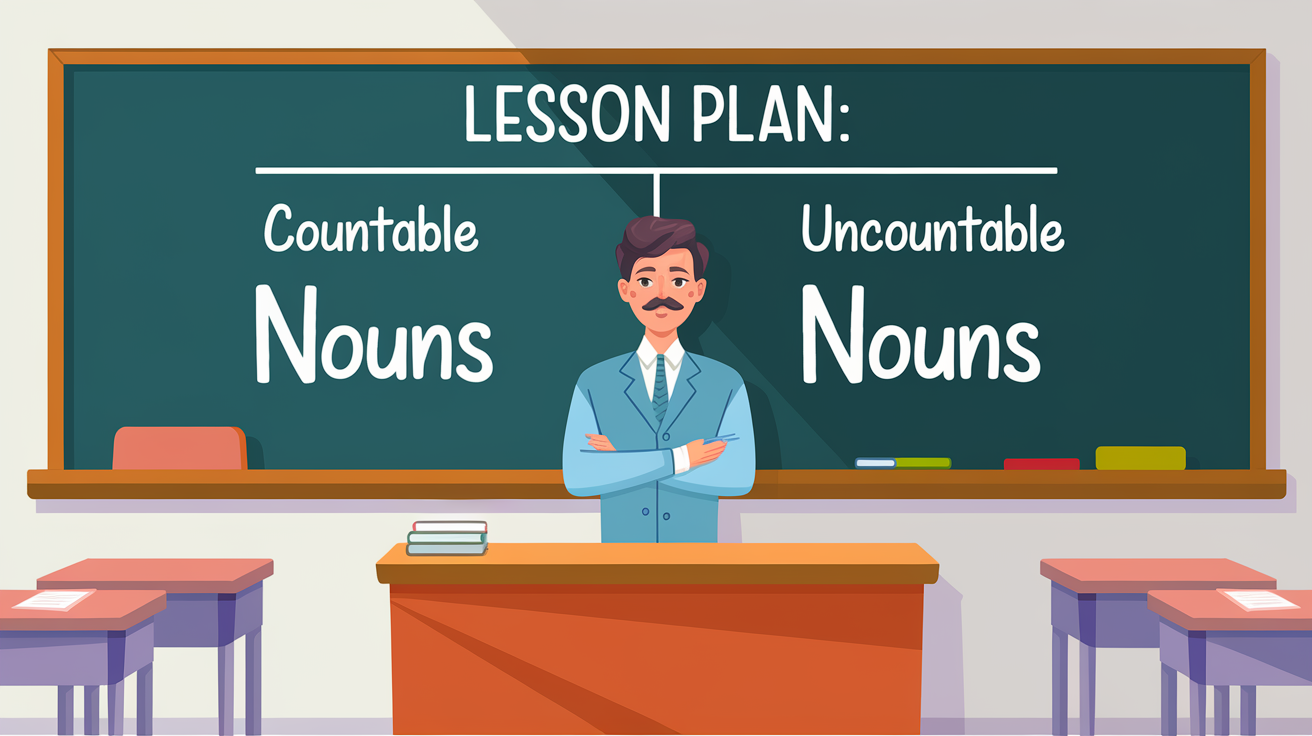Topic: English Nouns in Sentences
Goals:
- Understanding English nouns and their role in sentence construction.
- Using nouns correctly in various contexts.
- Selecting the right nouns to apply in sentences effectively.
Objectives:
By the end of the lesson, students should be able to:
- Differentiate types of English nouns (proper, common, countable, and uncountable).
- Identify nouns in given sentences.
- Rewrite sentences using different tenses while maintaining correct noun usage.
- Participate actively in class and apply lessons to improve writing and speaking skills.
Materials Needed:
- Internet access for research and interactive exercises.
- Noun worksheets for class activities.
- Definitions and examples of various noun types.
- Educational websites offering explanations and quizzes on nouns.
Introduction:
- What are Nouns? Introduce students to the basic definition of nouns as words representing a person, place, thing, or idea.
- Types of Nouns: Explain different types of nouns, including proper nouns, common nouns, countable and uncountable nouns. Use everyday examples like “John” (proper noun), “apple” (countable), and “happiness” (uncountable).
Development:
- Formal Language Use: Teach students that formal writing often involves more noun constructions, which can result in a structured but sometimes awkward style.
- Subject-Verb Relationship: Encourage students to identify the relationship between the subject (who or what is performing the action) and the predicate (the action) to understand how nouns fit into a sentence.
Example: “The teacher (subject) explains the lesson.”
Practice Activities:
- Noun Identification: Provide a paragraph and ask students to underline all the nouns. Example:
“The teacher gave the students books to read in the library.” - Noun Translation Exercise: Ask students to translate a sentence from past to present tense, keeping the nouns consistent.
Example:
Past: “The boy played in the park.”
Present: “The boy plays in the park.” - Multiple-Choice Quiz: Include exercises where students choose the correct noun for a given sentence.
Example:
“The dog chased the _.”
Options: (a) car (b) running (c) quickly.
Accommodations:
- Divide students into small groups to identify different types of nouns in assigned paragraphs.
- Have students share their findings and discuss how the nouns contribute to the meaning of the sentences.
- Encourage students to support their conclusions with specific examples from the text.
Checking for Understanding:
- Ask students to review their own writing or provided texts, ensuring proper noun use and revising where necessary.
- Provide time for in-class revision or assign it as homework, allowing students to strengthen their understanding of nouns in context.
Lesson Content: English Nouns Overview
| Noun Type | Examples |
|---|---|
| Proper Nouns | John, Paris, McDonald’s |
| Common Nouns | book, city, teacher |
| Countable Nouns | dog, apple, chair |
| Uncountable Nouns | water, information, rice |
| Singular Nouns | boy, pencil, car |
| Plural Nouns | boys, pencils, cars |
2.1.1. Recognizing Noun Endings:
Many nouns can be identified by their endings:
- -ity: nationality, identity
- -ment: appointment, engagement
- -ness: happiness, sadness
- -hood: childhood, neighborhood
2.1.2. Nouns in Sentence Position:
Nouns often come:
- After determiners:
a dog, the teacher, my house - After adjectives:
beautiful sunset, tall man
2.1.3. Noun Function in Sentences:
Nouns act as:
- Subjects:
The teacher explains the lesson. - Objects:
She loves coffee.
READ MORE – Engaging Metaphor & Simile Lesson Plans for English
Countable vs. Uncountable Nouns
| Type | Examples | Usage |
|---|---|---|
| Countable | dog, cat, book | I have a dog. I read three books. |
| Uncountable | water, rice, happiness | I need some water. She has happiness. |
Proper Nouns and Capitalization:
Proper nouns refer to specific names and always begin with a capital letter.
- People: John, Mary
- Places: London, Paris
- Companies: Apple, Ford
Plural and Possessive Nouns:
- Singular Possessive: The boy’s book (book belongs to the boy).
- Plural Possessive: The boys’ books (books belong to several boys).
Noun as Adjective:
Sometimes nouns act as adjectives to describe other nouns:
- History teacher (teacher who teaches history).
- Race horse (a horse used in racing).
Assessment & Reflection:
- In-Class Exercise: Have students write short paragraphs and identify the nouns they used.
- Peer Review: Encourage students to exchange paragraphs and give feedback on noun usage.
- Homework: Ask students to find 10 nouns from a story or article and classify them as proper, common, countable, or uncountable.
Conclusion:
Mastering English nouns helps in crafting clear, precise sentences. By learning to identify and use different types of nouns, students can improve their writing and speaking skills across a variety of contexts.
This English Noun Unit Plan is designed to engage students in learning the structure and use of nouns while building a solid foundation for their future language development.
